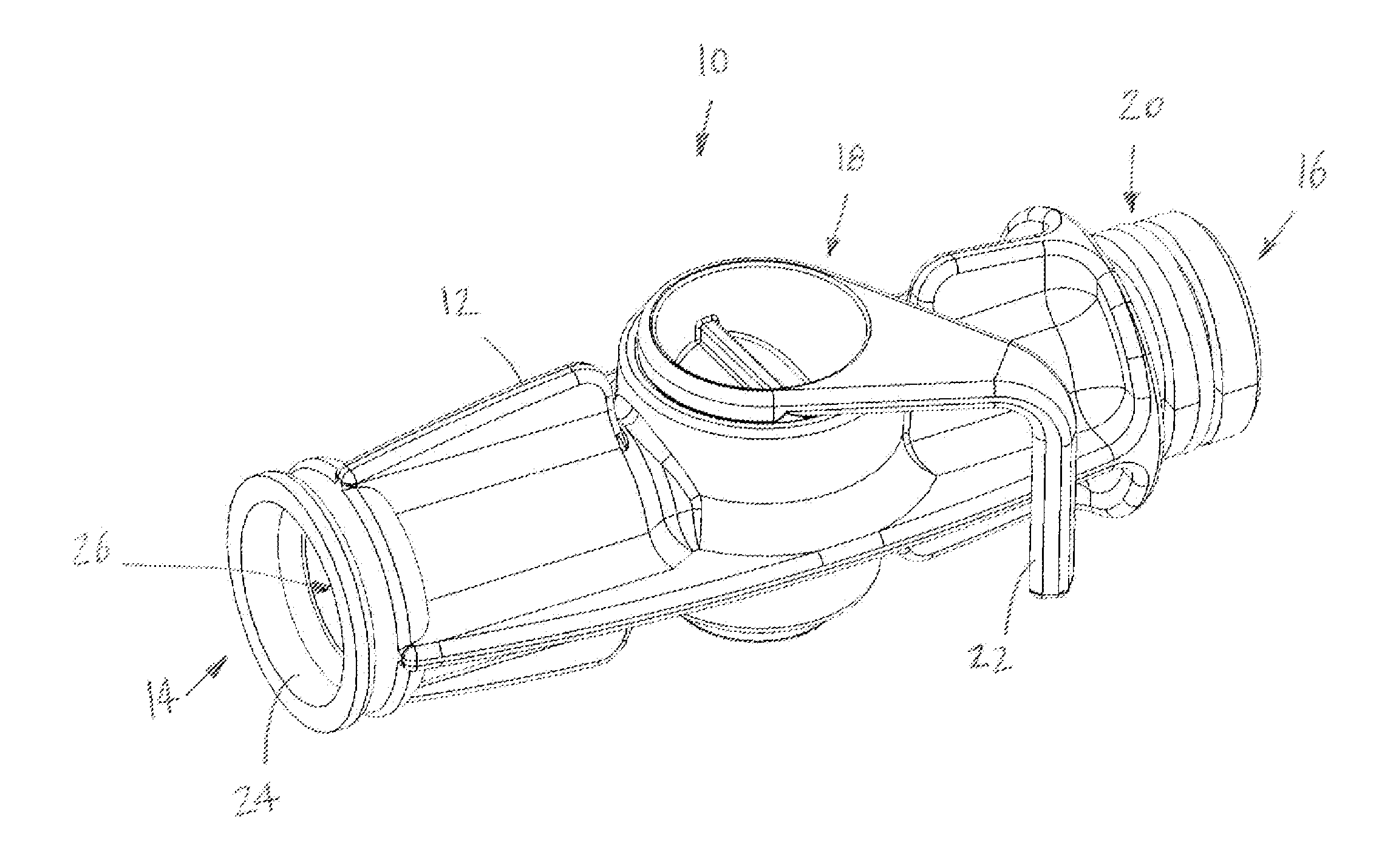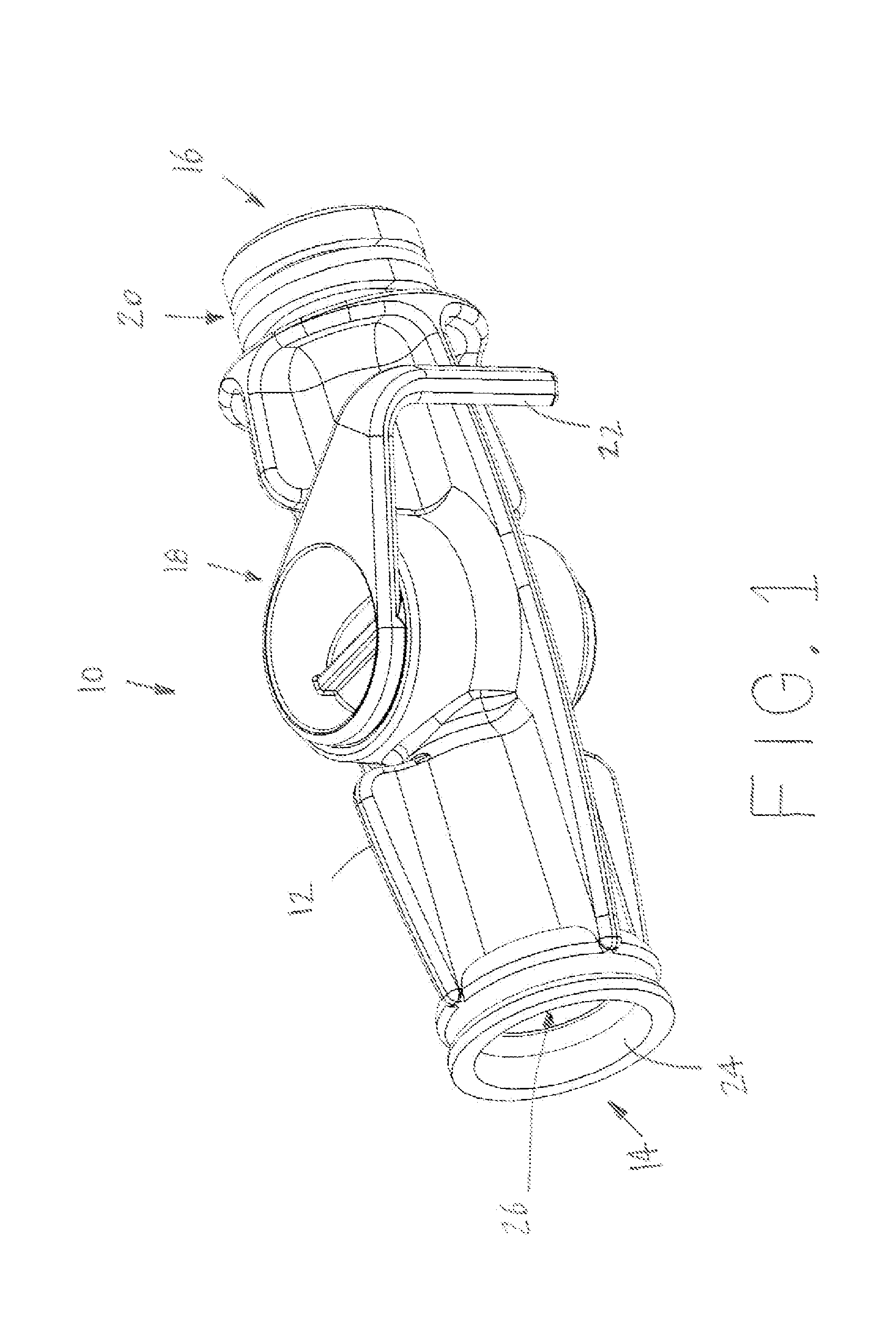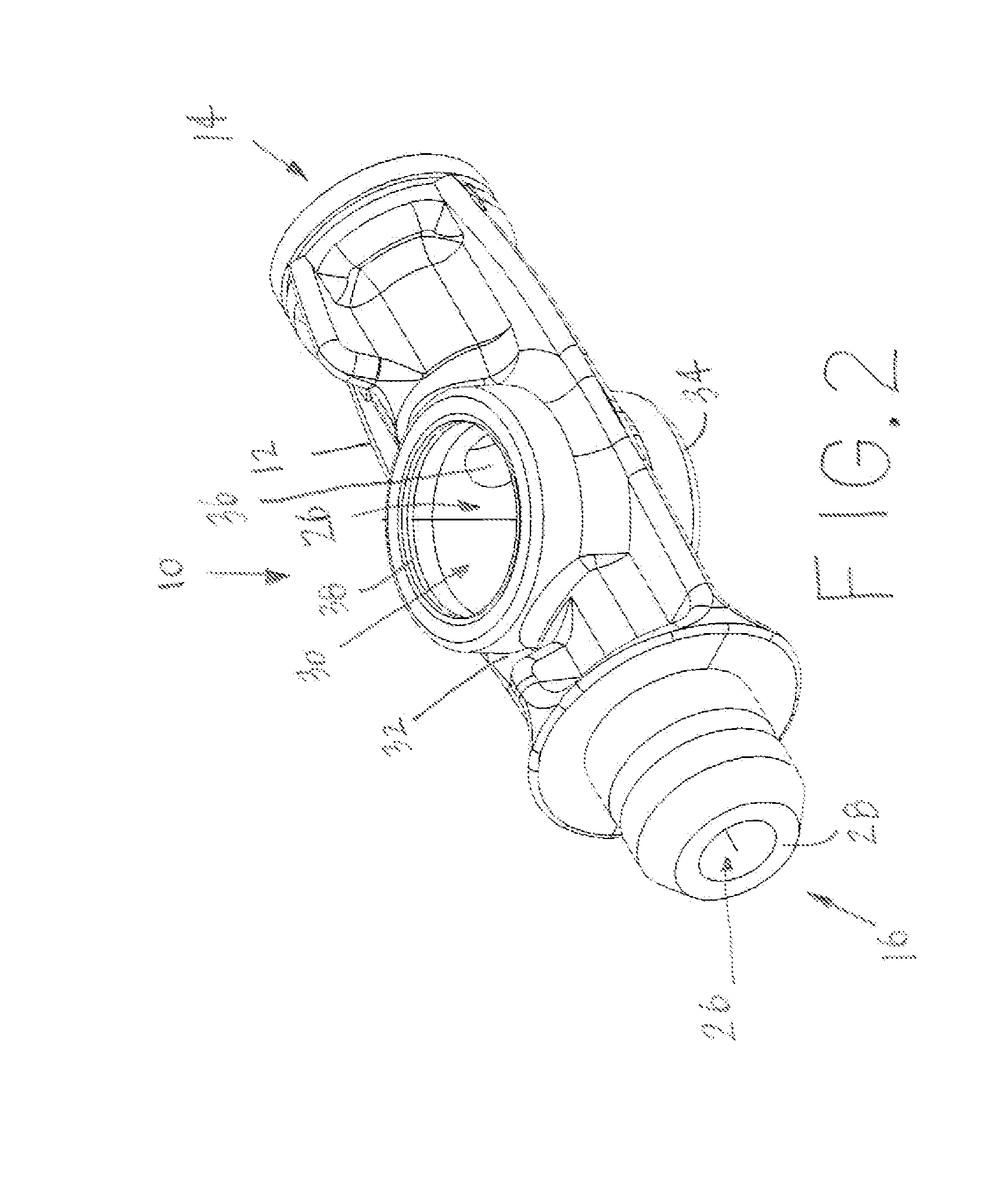Disposable dental valve device
a valve device and disassembly technology, applied in the field of valves for dental instruments, can solve the problems of valves that cannot be used valves that are not suitable for use, etc., and achieve the effect of reducing the cost of the device and eliminating any sound or noise associated
- Summary
- Abstract
- Description
- Claims
- Application Information
AI Technical Summary
Benefits of technology
Problems solved by technology
Method used
Image
Examples
Embodiment Construction
[0041]Referring now to the drawings, wherein like numbers refer to like items, number 10 identifies a disposable dental valve device for use with a dental system constructed according to the present disclosure. With reference now to FIG. 1, the valve 10 comprises a valve body 12 having a tip receiving end 14, a hose receiving end 16, and a rotatable valve sealing body 18. The tip receiving end 14 is adapted to receive an evacuator tip device (not shown) such as a high volume evacuator or a low volume evacuator (saliva ejector). The hose receiving end 16 is adapted to receive a vacuum line or a hose (not shown) which is connected to a suction system (also not shown). The hose receiving end 16 also has a circumferential channel 20 that is adapted to accept an O-ring (not shown). The O-ring is used to further secure a hose or a tailpiece to the hose receiving end 16. It is also possible that the hose receiving end 16 may incorporate a structure to secure a hose to the end 16 without th...
PUM
| Property | Measurement | Unit |
|---|---|---|
| Temperature | aaaaa | aaaaa |
| Temperature | aaaaa | aaaaa |
| Temperature | aaaaa | aaaaa |
Abstract
Description
Claims
Application Information
 Login to View More
Login to View More - R&D
- Intellectual Property
- Life Sciences
- Materials
- Tech Scout
- Unparalleled Data Quality
- Higher Quality Content
- 60% Fewer Hallucinations
Browse by: Latest US Patents, China's latest patents, Technical Efficacy Thesaurus, Application Domain, Technology Topic, Popular Technical Reports.
© 2025 PatSnap. All rights reserved.Legal|Privacy policy|Modern Slavery Act Transparency Statement|Sitemap|About US| Contact US: help@patsnap.com



